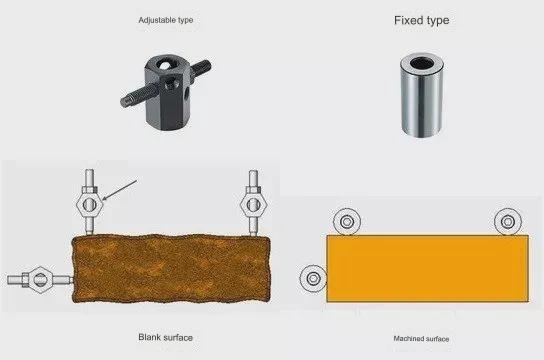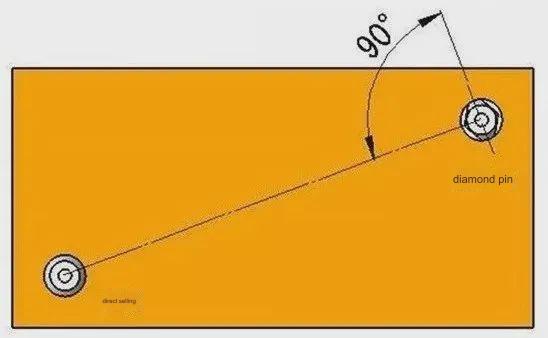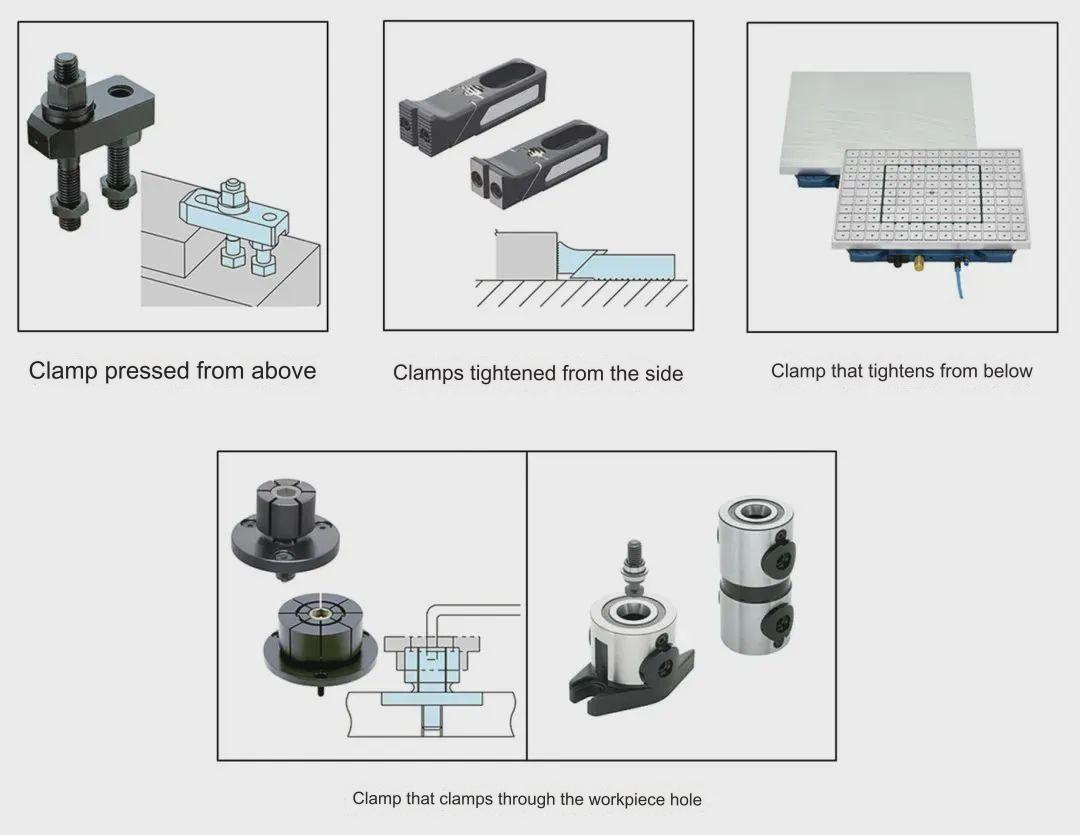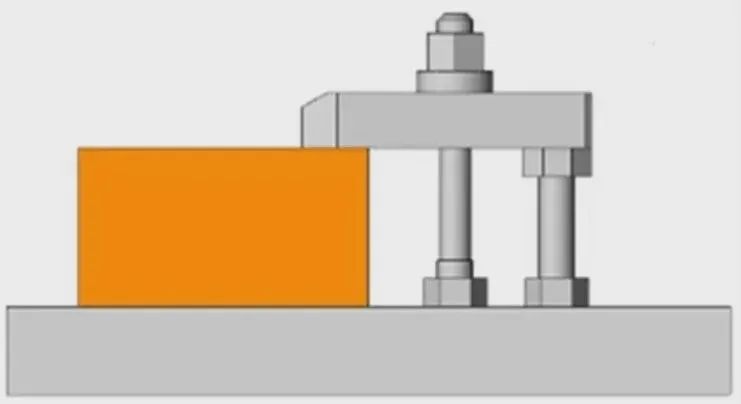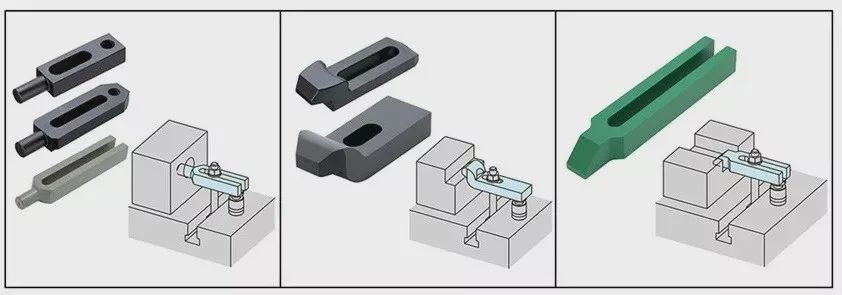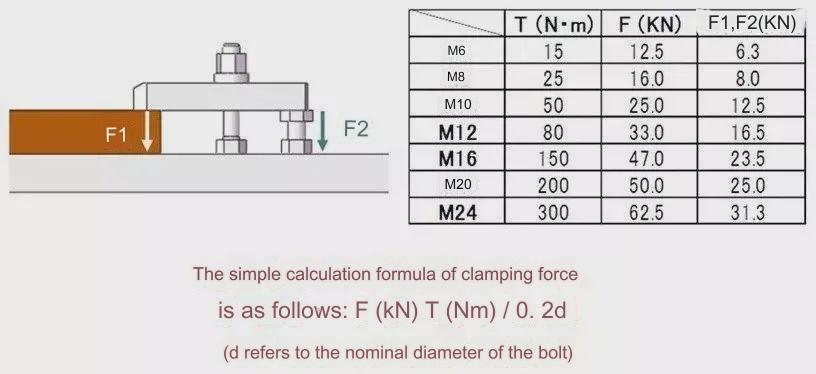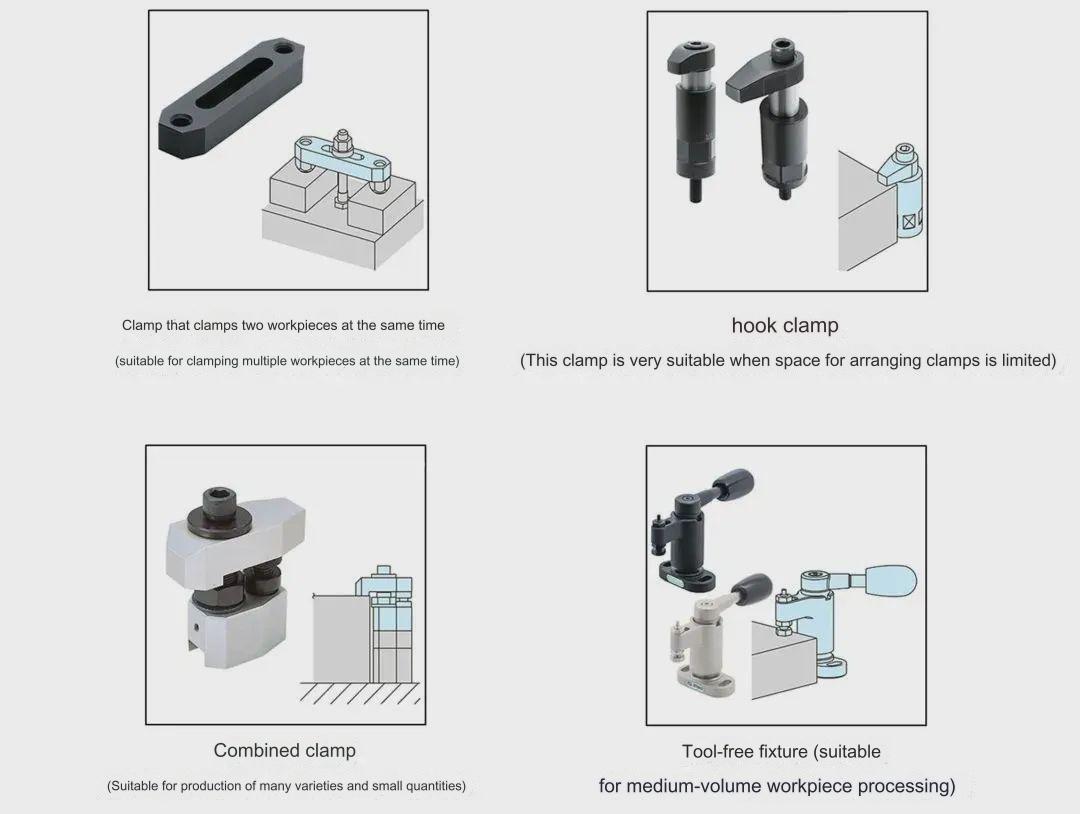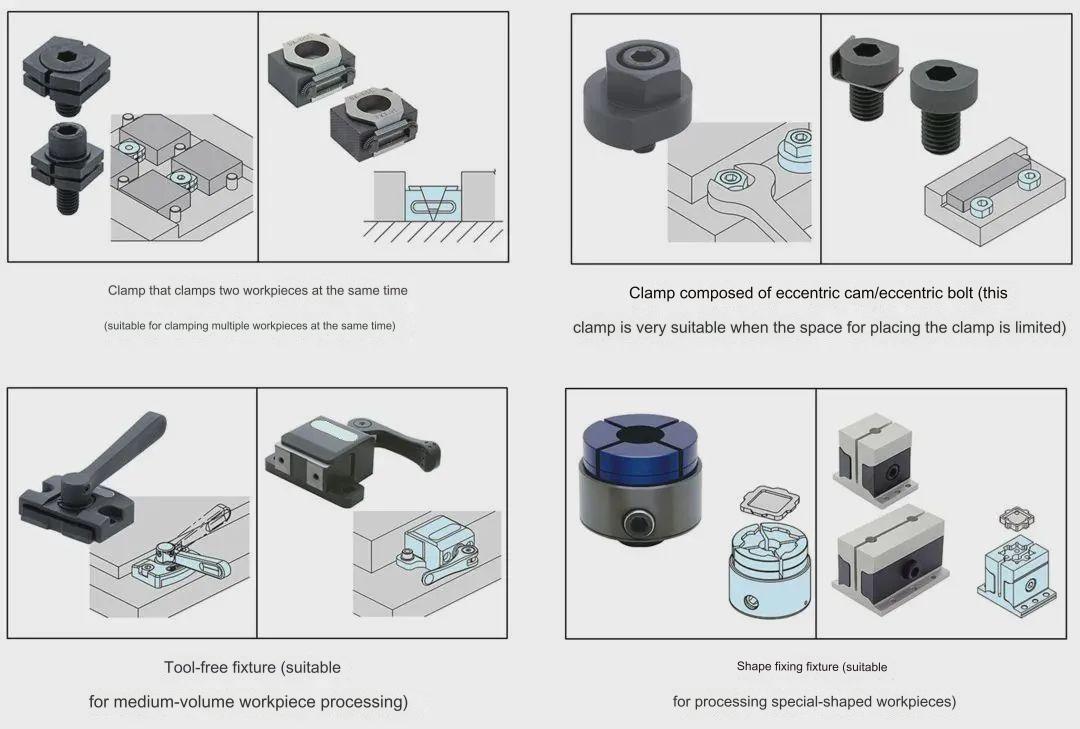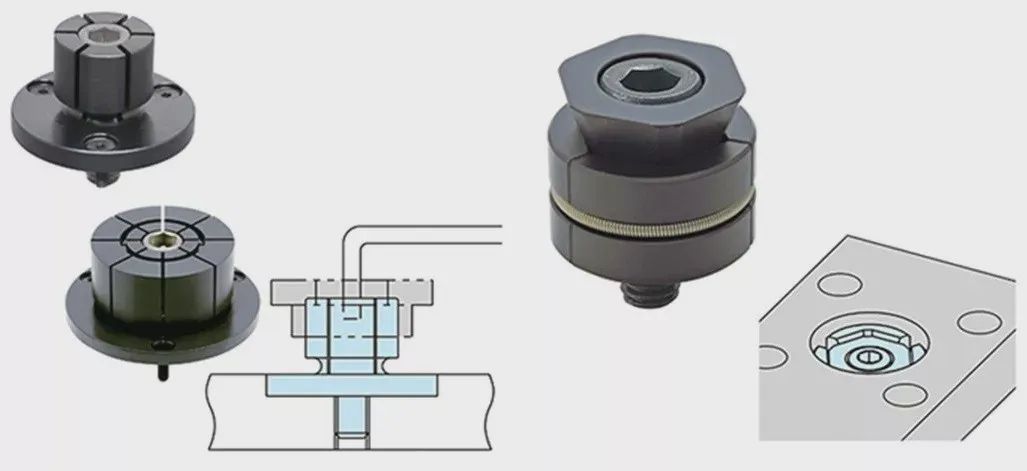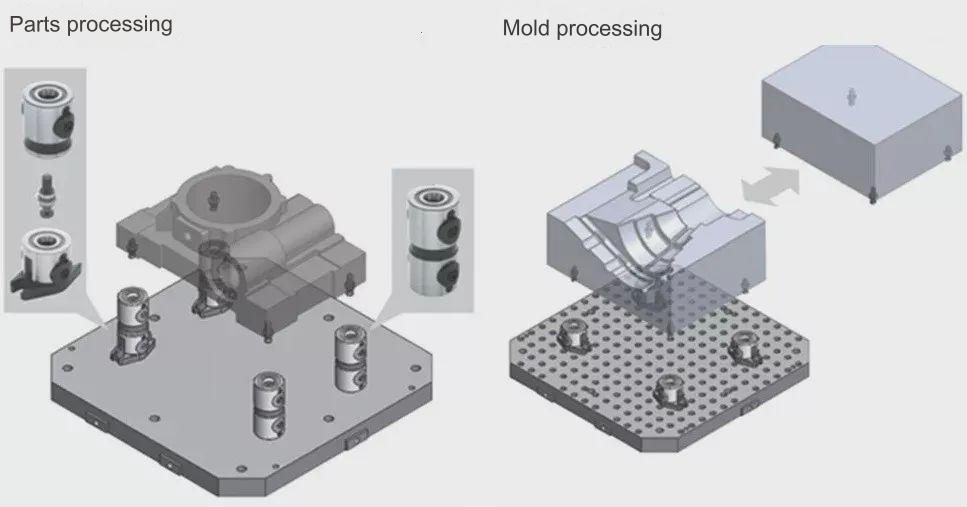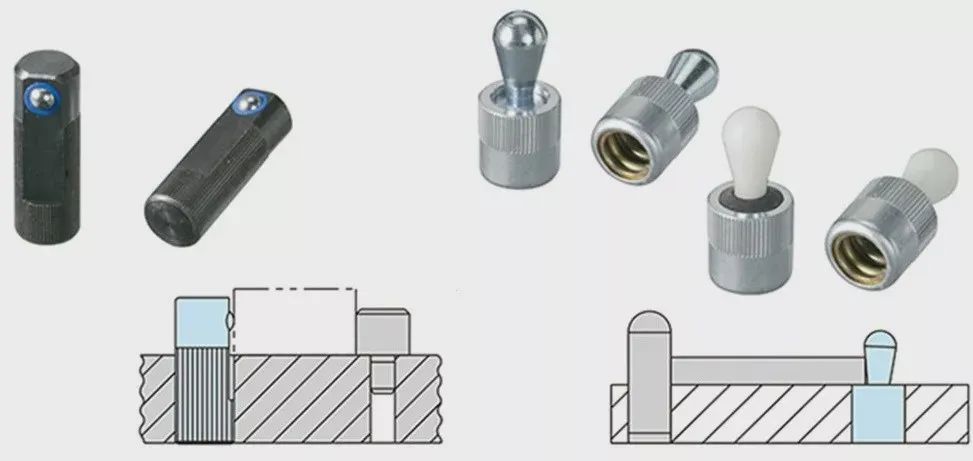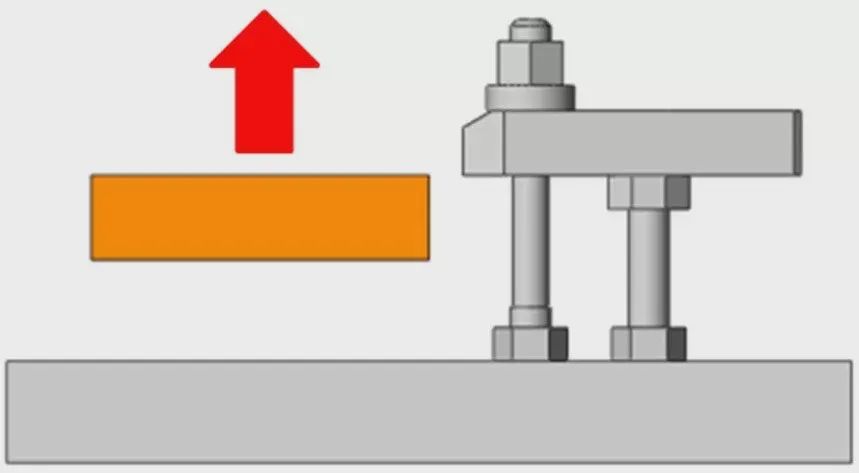How much do you know about positioning and clamping in machining?
For accurate and precise results, positioning and clamping are essential aspects of machining.
Learn about the importance of positioning and clamping when machining:
Positioning: This is the precise placement of the workpiece relative to the cutting tool. Aligning the workpiece along three primary axes (X, Y, Z) is required to obtain the desired dimensions and cutting path.
Alignment is crucial for precise machining: Aligning workpieces accurately is possible with techniques such as edge finders, indicators and coordinate measuring machine (CMM).
It is essential to establish a datum surface or point for consistent positioning: This allows all subsequent machining to be based on a common surface or reference point.
Clamping is the process of securing the workpiece on the machine: It provides stability and prevents vibrations or movement that could lead to inaccurate machining.
Types of Clamps: There are many types of clamps that can be used for machining. These include magnetic clamps and pneumatic, hydraulic, or hydraulic-pneumatic clamps. The choice of clamping methods is based on factors like the size and shape, the machining force, and the specific requirements.
Clamping Techniques: Proper clamping involves evenly distributing the clamping force, maintaining consistent pressure on the workpiece and avoiding distortion. To prevent damage to the workpiece while maintaining stability, it is essential to use the right clamping pressure.
Fixtures are special tools that clamp and position workpieces: They offer support, alignment and stability for machining operations. This reduces the risk of error and improves productivity.
Fixtures come in many different types, such as V-blocks and angle plates. They can also be custom-designed. The choice of the right fixture is determined by the complexity of the piece and the machining needs.
Fixture Design involves careful considerations of factors like workpiece dimensions, weight, material and access requirements. A good fixture design will ensure optimal clamping and positioning for efficient machining.
Tolerances & Precision: Accurate positioning and clamping are essential for achieving tight tolerances and precision when machining. A slight error in clamping or positioning can lead to dimension variations and compromise quality.
Inspection and Verification: Regular inspections and verifications of clamping and positioning accuracy are essential to ensure consistency in quality. To validate the accuracy of machined parts, measuring devices like calipers and micrometers as well as CMMs can be used.
It is not as simple as this. We found out that the initial design always has some problems with clamping and positioning. Innovative solutions lose their relevance. We can only ensure the integrity and quality of a fixture design by understanding basic positioning and clamping knowledge.
Locator knowledge
1. Positioning the workpiece from the side is a basic principle.
The 3-point principle, like the support, is the basic principle for positioning the workpiece from the side. The 3-point principle is the same as that of the support. This principle is derived by the fact that “three straight lines that do not intersect each other determine a plane.” Three of the four points can be used to determine a plane. This means that a total 4 surfaces can then be determined. It is difficult to get the fourth point on the same plane, regardless of how the points are positioned.
▲3-point principle
For instance, in the case of utilizing four fixed-height positioners, only three specific points are capable of making contact with the workpiece, leaving a high likelihood that the remaining fourth point will not establish contact.
Therefore, while configuring the locator, the general practice is to base it on three points while maximizing the distance between these points.
Furthermore, during the arrangement of the positioner, it is imperative to pre-confirm the direction of the applied processing load. The direction of the machining load coincides with the movement of the tool holder/tool. Placing a positioner at the end of the feed direction directly impacts the overall accuracy of the workpiece.
Typically, for positioning the rough surface of the workpiece, a bolt-type adjustable positioner is employed, while a fixed type positioner (with a ground workpiece contact surface) is utilized for positioning the machined surface of the machining parts.
2. Fundamental principles of positioning through workpiece holes
When positioning using holes created during the preceding machining process, pins with tolerances must be utilized. By aligning the precision of the workpiece hole with the accuracy of the pin shape, and combining them based on the fit tolerance, the positioning accuracy can meet the actual requirements.
Additionally, when using pins for positioning, it is common to employ a straight pin alongside a diamond pin. This not only facilitates the assembly and disassembly of the workpiece but also minimizes the chance of the workpiece and the pin getting stuck together.
▲Use pin positioning
Certainly, it is viable to achieve optimal fit tolerance by utilizing straight pins for both positions. However, for greater accuracy in positioning, the combination of a straight pin and a diamond pin proves to be more effective.
When employing both a straight pin and a rhombus pin, it is generally recommended to position the rhombus pin in a manner where the line connecting its arrangement direction to the workpiece is perpendicular (at a 90° angle) to the line connecting the straight pin and the rhombus pin. This specific arrangement is crucial in determining the angle of positioning and the direction of workpiece rotation.
Clamp related knowledge
1. Classification of clamps
According to the clamping direction, it is generally divided into the following categories:
1. Overhead Compression Clamp
An overhead compression clamp exerts pressure from above the workpiece, resulting in minimal deformation during clamping and enhanced stability during workpiece processing. As a result, clamping the workpiece from above is typically prioritized. The most prevalent type of clamp used in this manner is a manual mechanical clamp. For instance, the illustrated clamp below is referred to as the ‘pine leaf type’ clamp. Another variant, known as the ‘loose leaf’ clamp, comprises a pressure plate, stud bolts, jacks, and nuts.”
Furthermore, depending on the shape of the workpiece, you have the option to choose from a variety of pressure plates that are specifically designed to match different workpiece shapes.
It is possible to determine the correlation between torque and clamping force in loose leaf clamping by analyzing the pushing force exerted by the bolt.
Apart from the loose leaf type clamp, there are also other clamps available that secure the workpiece from above.
2. Side clamp for workpiece clamping
The conventional clamping method involves securing the workpiece from above, offering superior stability and minimal processing load. However, situations may arise where top clamping is unsuitable, such as when the top surface requires machining or when top clamping is not feasible. In such cases, opting for side clamping becomes necessary.
Nevertheless, it is important to note that clamping the workpiece from the side generates a floating force. Attention must be given to eliminating this force during fixture design to ensure optimal performance.
Considerations could include incorporating mechanisms that counteract the floating force effect, such as using additional support or pressure to stabilize the workpiece. By effectively addressing the floating force, a reliable and secure side clamping solution can be achieved, expanding the flexibility of workpiece processing.
There are also side clamps available, as depicted in the above image. These clamps apply a thrust force from the side, creating an oblique downward force. This specific type of clamp is highly effective in preventing the workpiece from floating upwards.
Similar to these side clamps, there are other clamps that also operate from the side.
Workpiece Clamping from the Bottom
When handling a thin-plate workpiece and needing to process its upper surface, traditional clamping methods from above or from the side prove impractical. In such scenarios, a viable solution is to clamp the workpiece from below. For workpieces made of iron, a magnet type clamp is often suitable, while non-ferrous custom metal milling workpieces can be secured using vacuum suction cups.
In both cases mentioned above, the clamping force depends on the contact area between the workpiece and the magnet or vacuum chuck. It is worth noting that if the processing load on small workpieces becomes too excessive, the desired processing outcome may not be achieved.
Additionally, it is important to ensure that the contact surfaces of magnets and vacuum suction cups are adequately smooth for safe and proper utilization.
Implementing Hole Clamping
When employing a 5-axis machining machine for tasks such as simultaneous multi-face processing or mold processing, it is advisable to opt for hole clamping as it helps mitigate the impact of fixtures and tools on the processing procedure. Compared to clamping from the top or side of the workpiece, hole clamping applies less pressure and effectively minimizes workpiece deformation.
▲Use holes for direct processing
▲Rivet Installation for Clamping
Pre-clamping
The preceding information primarily focuses on workpiece clamping fixtures. It is crucial to consider how to enhance usability and improve efficiency through pre-clamping. When positioning the workpiece vertically on the base, gravity may cause the workpiece to fall downward. In such cases, it becomes essential to manually hold the workpiece while operating the clamp in order to prevent any accidental displacement.
▲Pre-clamping
If the workpiece is heavy or multiple pieces are clamped simultaneously, it can significantly hamper operability and prolong the clamping time. To address this, using a spring-type pre-clamping product allows the workpiece to be clamped while remaining stationary, greatly enhancing operability and reducing clamping time.
Considerations when choosing a clamp
When using multiple types of clamps in the same tooling, it is important to use the same tools for both clamping and loosening. For instance, in the left picture below, using multiple tool wrenches for clamping operations increases the overall burden on the operator and extends the clamping time. On the other hand, in the right picture below, unifying the tool wrenches and bolt sizes simplifies the process for on-site operators.
▲Operational Performance of Workpiece Clamping
Furthermore, when configuring a clamping device, it is important to take into consideration the operational performance of workpiece clamping. If the workpiece needs to be clamped at an inclined angle, it can greatly inconvenience the operations. Therefore, it is crucial to avoid such situations when designing fixture tooling.
Anebon pursuit and company purpose is always to “Always satisfy our consumer requirements”. Anebon keep on to acquire and style and design remarkable high-quality products for each our outdated and new customers and reach a win-win prospect for Anebon’s consumers as well as us for Original Factory Profile extrusions aluminum, cnc turned part, cnc milling nylon. We sincerely welcome friends to barter business enterprise and start cooperation with us. Anebon hope to hitch hands with close friends in different industries to produce a brilliant long run.
China Manufacturer for China High Precision and Metal Stainless Steel Foundry, Anebon is seeking the chances to meet all the friends from both at home and abroad for the win-win cooperation. Anebon sincerely hope to have long-term cooperation with all of you on the bases of mutual benefit and common development.
Post time: Sep-25-2023

